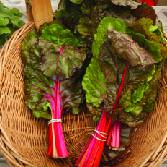-
CATEGORY ::
- All Seeds /
- All Flower Seeds /
- All Poppy Seeds


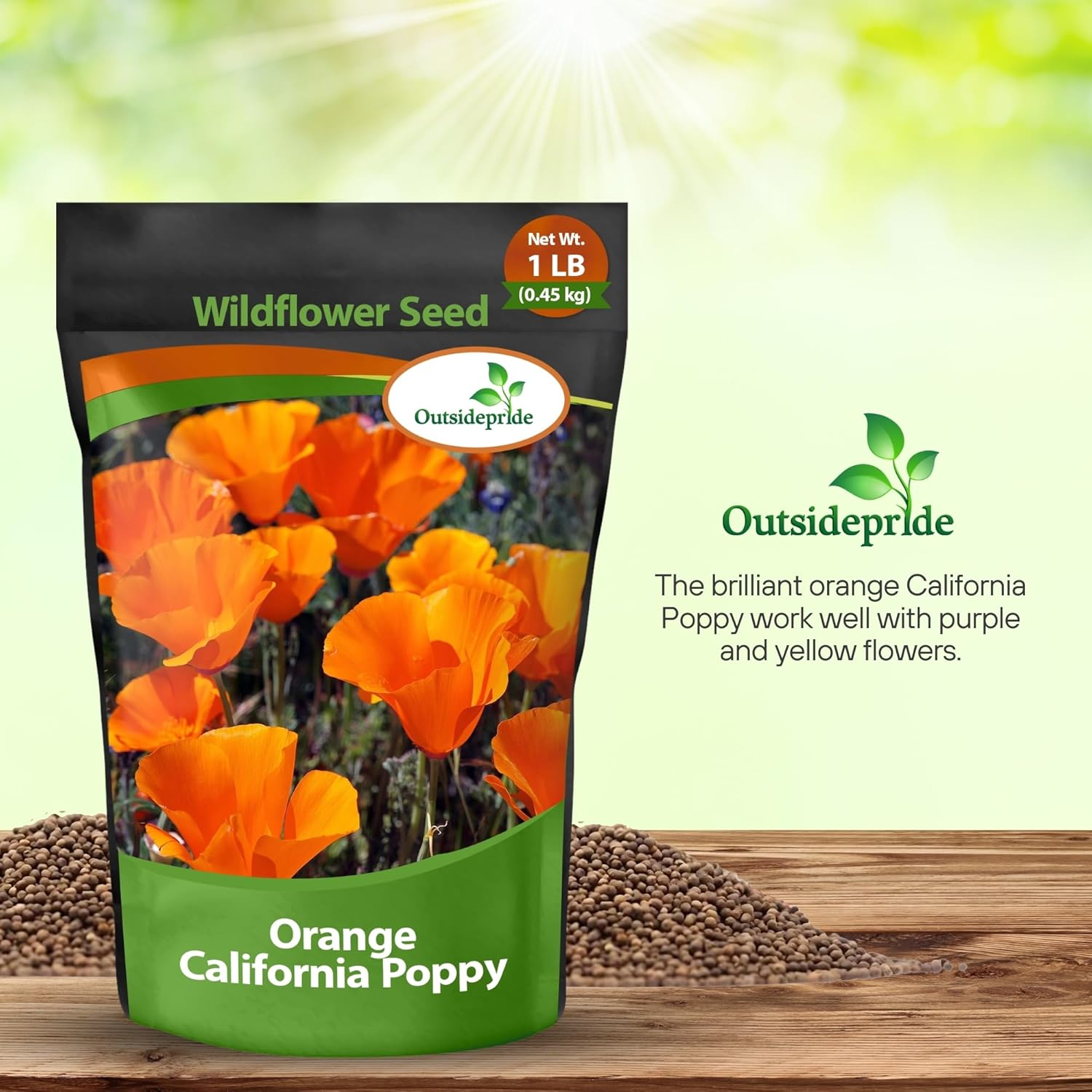
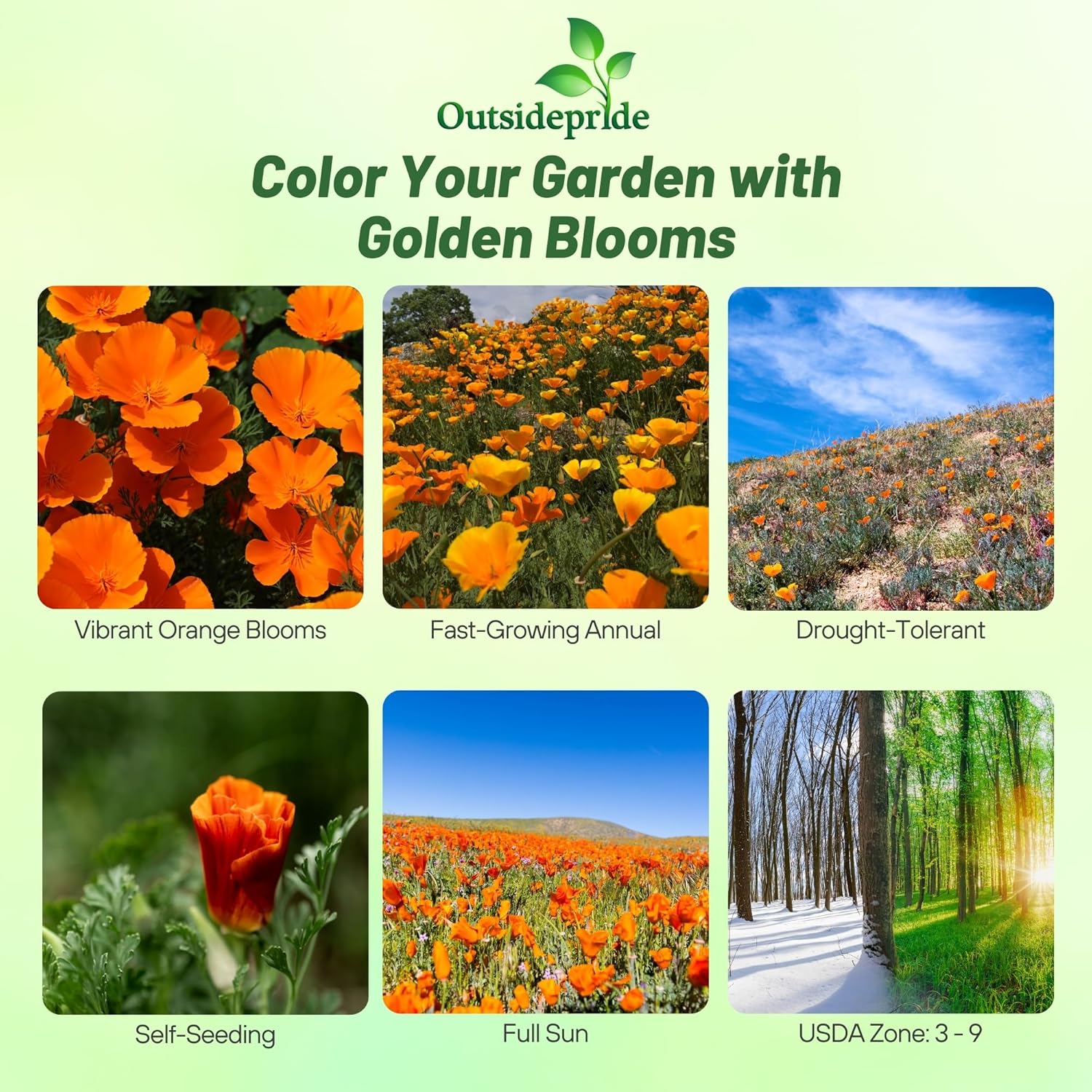
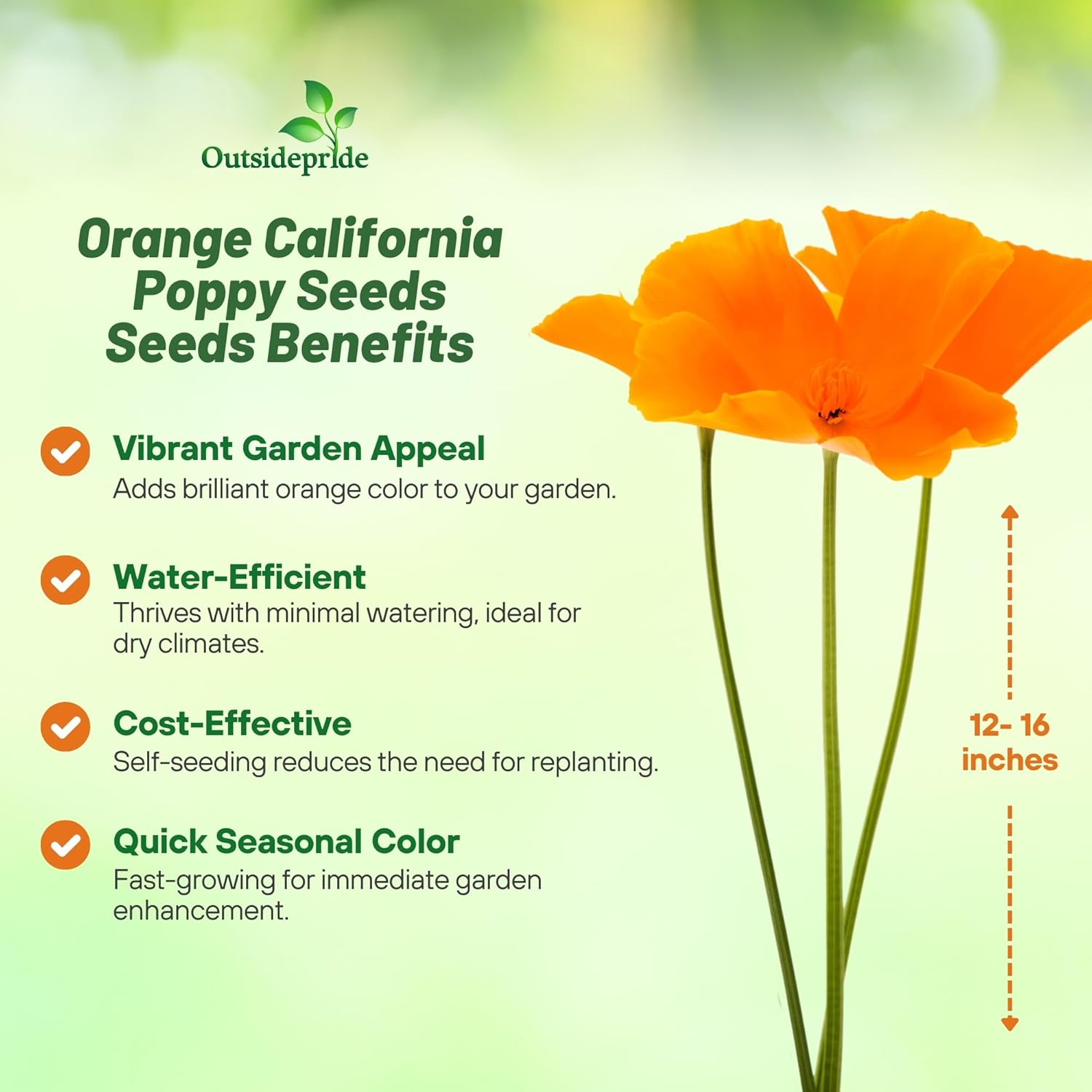
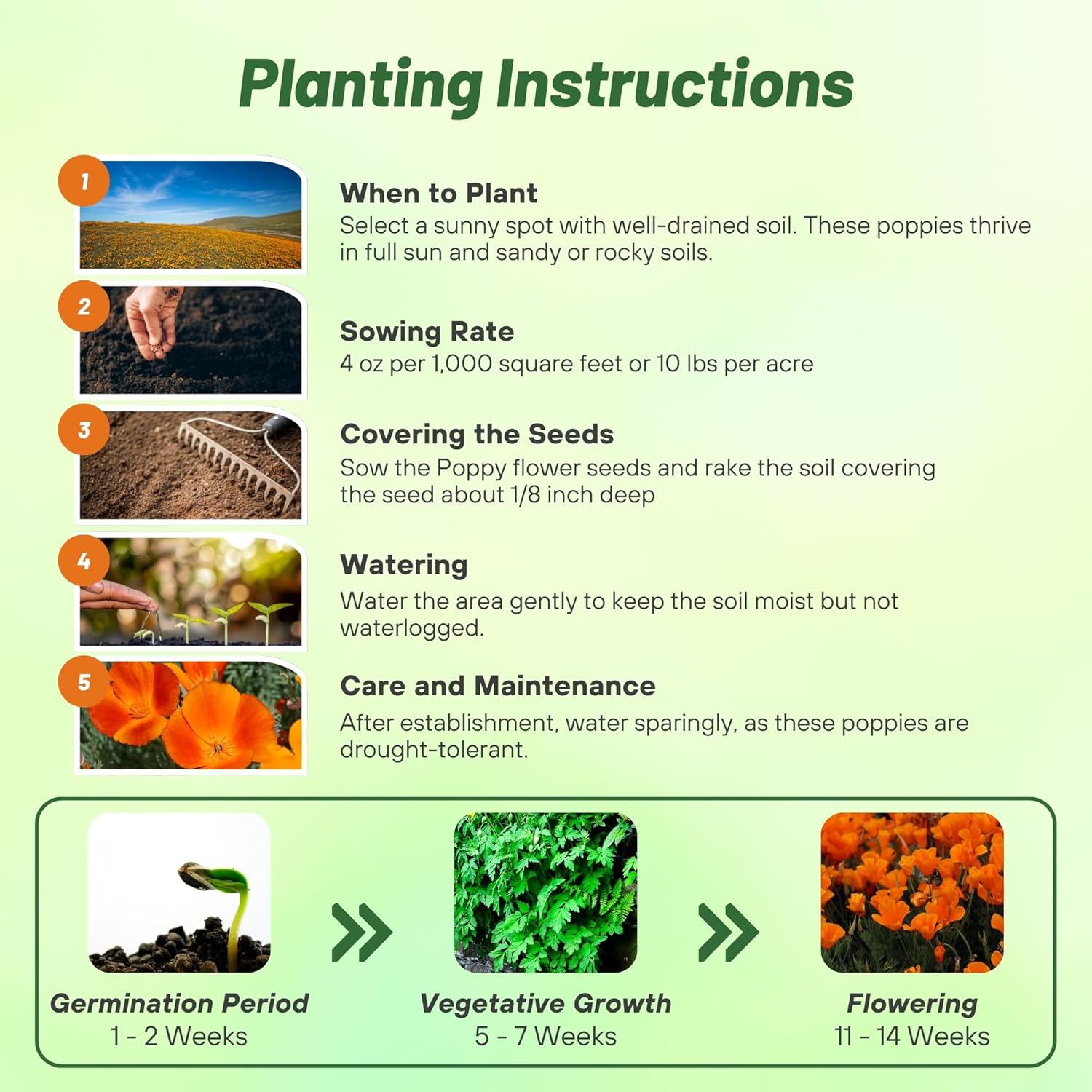







Poppy Seeds - California
SEEDS PER POUND
294,835
SEASON
Annual
USDA ZONES
3 - 9
HEIGHT
12 - 16 inches
BLOOM SEASON
Mid-summer
BLOOM COLOR
Orange
ENVIRONMENT
Full sun
SOIL TYPE
Prefers gritty, fast-draining conditions, pH 6.6 - 7.5
DEER RESISTANT
Yes
SEEDS PER POUND
3,400,000
SEASON
Annual
USDA ZONES
3 - 9
HEIGHT
12 - 15 inches
BLOOM SEASON
Summer
BLOOM COLOR
Red
ENVIRONMENT
Full sun
SOIL TYPE
Loose, well-drained, pH 6.1 - 7.3
DEER RESISTANT
Yes
SEASON
Perennial
USDA ZONES
3 - 8
HEIGHT
12 inches
BLOOM SEASON
Mid spring to early summer
BLOOM COLOR
Orange
ENVIRONMENT
Full sun
SOIL TYPE
Loose, well-drained, pH 6.1 - 7.3
DEER RESISTANT
Yes
SEASON
Annual
USDA ZONES
3 - 10
HEIGHT
10 - 12 inches
BLOOM SEASON
Mid spring to late summer
BLOOM COLOR
Mix
ENVIRONMENT
Full sun
SOIL TYPE
Prefers gritty, fast-draining conditions, pH 6.6 - 7.5
DEER RESISTANT
Yes
SEASON
Annual
USDA ZONES
3 - 10
HEIGHT
12 inches
BLOOM SEASON
Mid spring to late summer
BLOOM COLOR
Pink
ENVIRONMENT
Full sun
SOIL TYPE
Prefers gritty, fast-draining conditions, pH 6.6 - 7.5
DEER RESISTANT
Yes
SEASON
Annual
USDA ZONES
3 - 10
HEIGHT
10 inches
BLOOM SEASON
Mid spring to late summer
BLOOM COLOR
Yellow
ENVIRONMENT
Full sun
SOIL TYPE
Prefers gritty, fast-draining conditions, pH 6.6 - 7.5
DEER RESISTANT
Yes
SEASON
Annual
USDA ZONES
3 - 10
HEIGHT
10 inches
BLOOM SEASON
Mid spring to late summer
BLOOM COLOR
White
ENVIRONMENT
Full sun
SOIL TYPE
Prefers gritty, fast-draining conditions, pH 6.6 - 7.5
DEER RESISTANT
Yes
SEASON
Annual
USDA ZONES
3 - 10
HEIGHT
10 inches
BLOOM SEASON
Mid spring to late summer
BLOOM COLOR
Red
ENVIRONMENT
Full sun
SOIL TYPE
Prefers gritty, fast-draining conditions, pH 6.6 - 7.5
DEER RESISTANT
Yes
About...
California Poppy (Eschscholzia Californica) - California Poppy seeds will grow quite well in cold climates, but only as an annual. Drought tolerant poppies can be used in beds, borders, and in naturalized settings, but generally do not do well in containers. The brilliant orange California Poppy work well with purple and yellow flowers.
MORE POPPY OPTIONS
Planting Directions
TEMPERATURE
60 - 70F
AVERAGE GERM TIME
14 - 28 days
LIGHT REQUIRED
Yes
DEPTH
1/8 inch
SOWING RATE
4 ounces per 1,000 square feet or 10 pounds per acre
MOISTURE
Keep seeds moist until germination
PLANT SPACING
12 inches
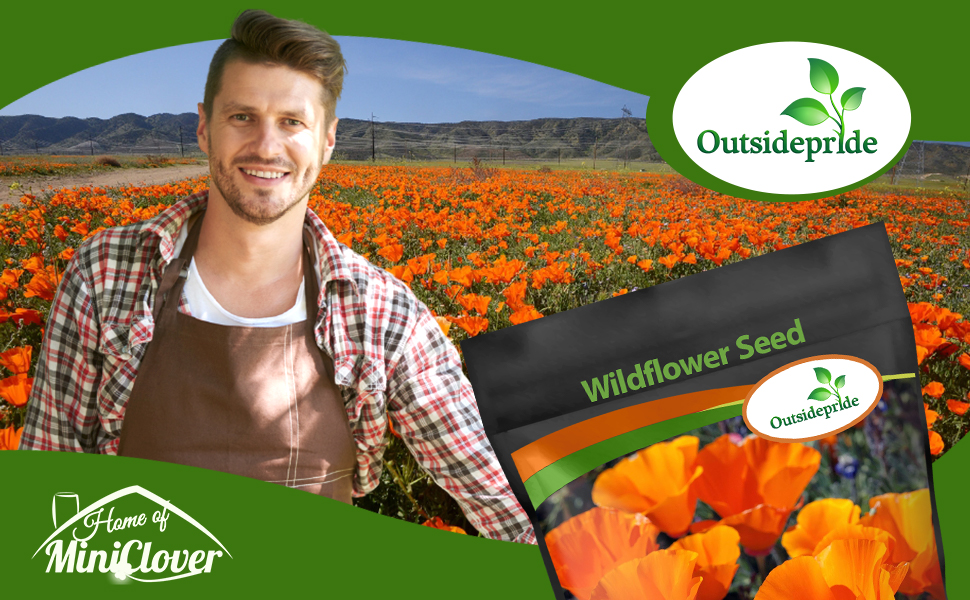
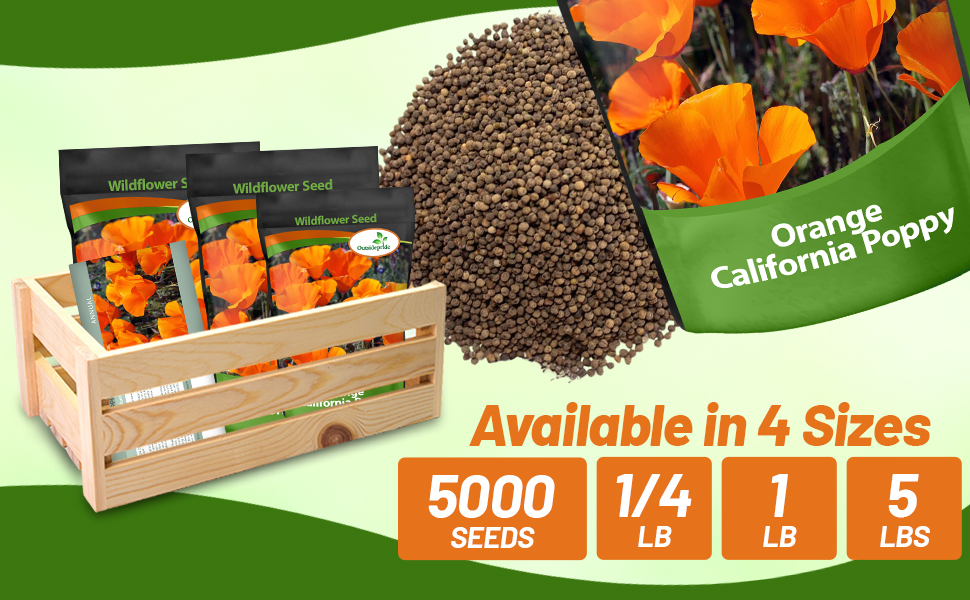

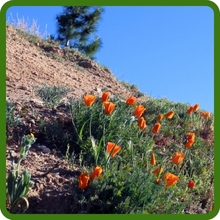
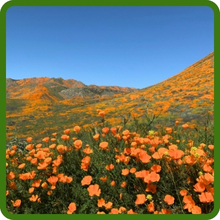
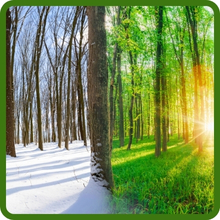


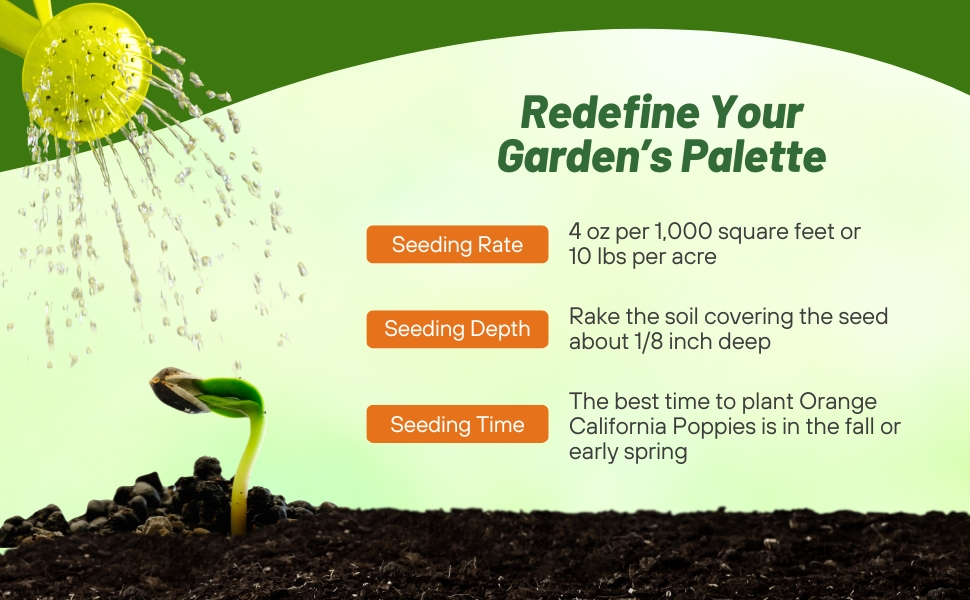
California Poppy (Eschscholzia Californica) - The bright orange drought tolerant California Poppy wildflower was named for doctor-naturalist Johann Friedrich Gustav von Eschscholtz who was the surgeon for the Russian expedition team that dropped anchor in San Francisco in 1815 in a bay surrounded by hills covered with the golden flowers. The wild flowers were designated the state flower of California in 1903, and now are protected by state law prohibiting anyone from picking or destroying them when they are growing on public property. These Poppy flowers close at night or in cold, windy weather and open again the following morning, although they may remain closed in cloudy weather.
Common Questions
Do I need to deadhead California poppy?
This is optional; however, it will extend your bloom season. Leaving on some spent flowers if you want to reseed for your next growing season.
Are these flowers fragrant?
They are not known for their scent, but they are valued highly for their cheerful blooms.
Can I grow in containers?
Yes, you can. Make sure to choose a container large enough for mature plants as California poppies do not like to be transplanted. Containers will need good drainage and you will also need to water more frequently.
Are poppies deer resistant?
Yes, they do tend to be deer resistant.
Planting Directions
TEMPERATURE
55 - 60F
AVERAGE GERM TIME
21 - 28 days
LIGHT REQUIRED
Yes
DEPTH
Do not cover the seed but press into the soil
SOWING RATE
2/3 ounce per 1,000 square feet or 2 pounds per acre
MOISTURE
Keep seeds moist until germination
PLANT SPACING
12 inches
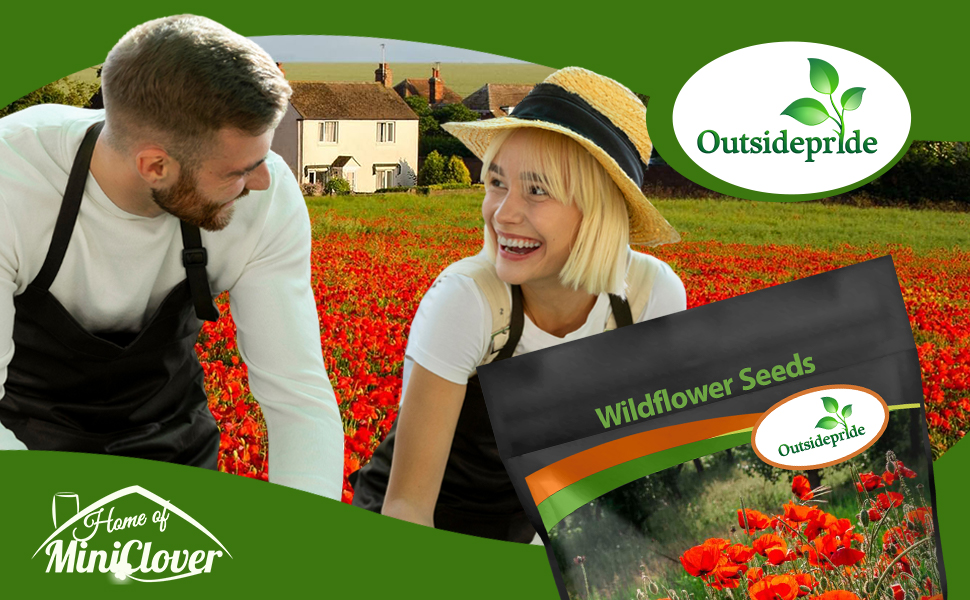
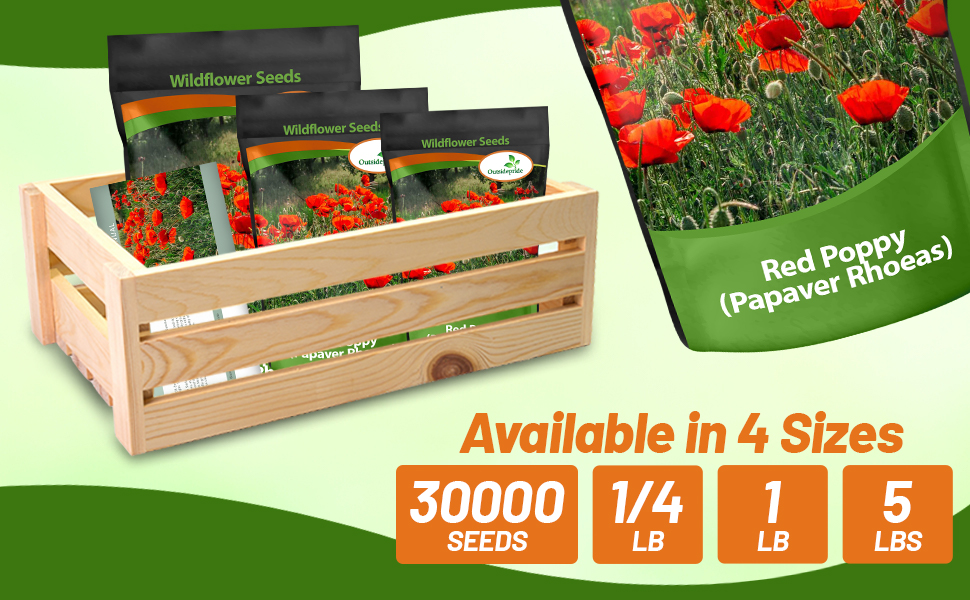
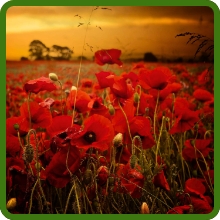
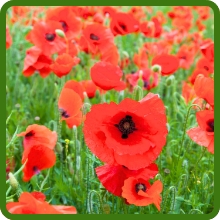

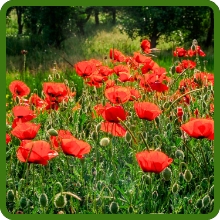
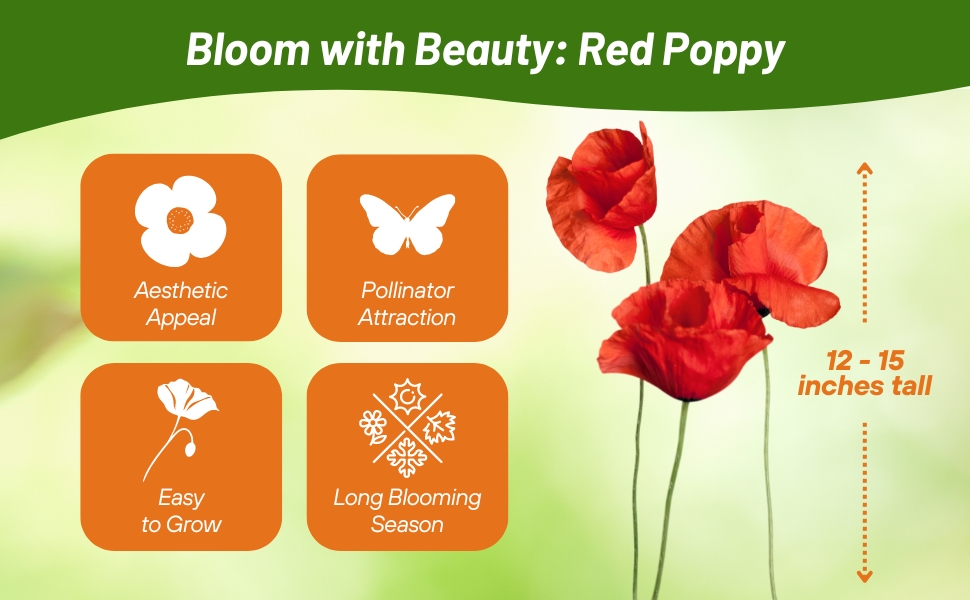

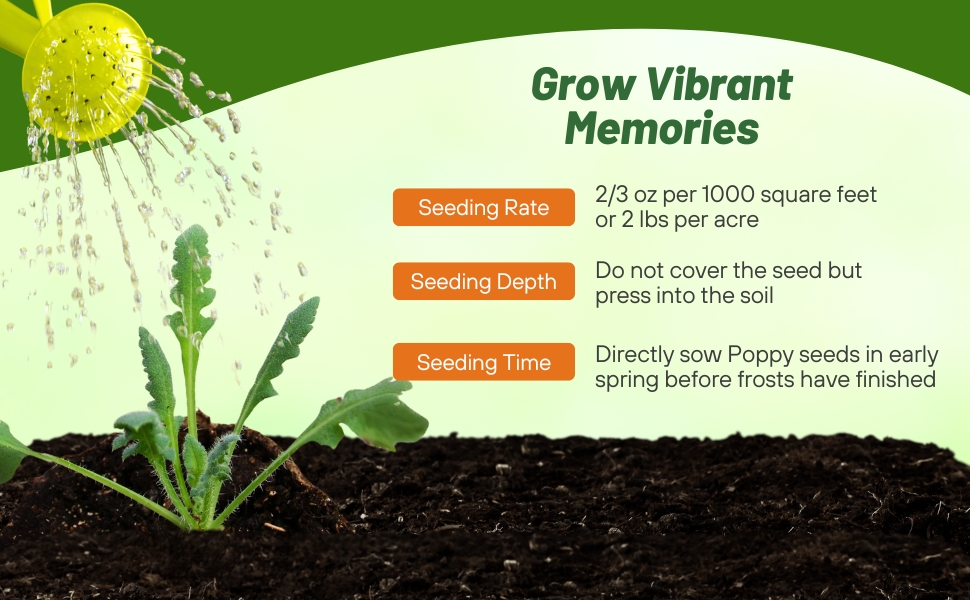
Red Poppy (Papaver Rhoeas) - The drought tolerant Red Poppy is one of the most popular wildflowers in all the world, and it easily establishes from Poppy seeds. It is also known as Shirley Poppy, Flanders Poppy, American Legion Poppy, (the red poppy is the symbol of the American Legion, handed out for Memorial Day), and in England, Corn Poppy. This wildflower is native to most of all Europe and North Africa. Growing Poppies from seed is such a rewarding experience. Red Poppies are favorites with xeriscape gardeners because they grow so successfully from wildflower seed, and they transform a dull boring landscape into an intense display of gorgeous red blooms. Since they are annuals, they grow quickly from flower seeds each spring and drop new Red Poppy wildflower seed in the fall.
Common Questions
Do I need to deadhead Papaver rhoeas?
This is optional; however, it will extend your bloom season.
Do I need to fertilizer Papaver rhoeas?
Typically, no. However, if you notice foliage and no flowers your plants may be in need of phosphorus-rich fertilizer.
Are these flowers fragrant?
They are not known for their scent, but they are valued highly for their blooms.
Planting Directions
TEMPERATURE
60 - 65F
AVERAGE GERM TIME
14 - 21 days
LIGHT REQUIRED
Yes
DEPTH
Surface sow seeds just barely covering
SOWING RATE
3 - 4 seeds per plant
MOISTURE
Keep seeds moist until germination
PLANT SPACING
8 - 10 inches
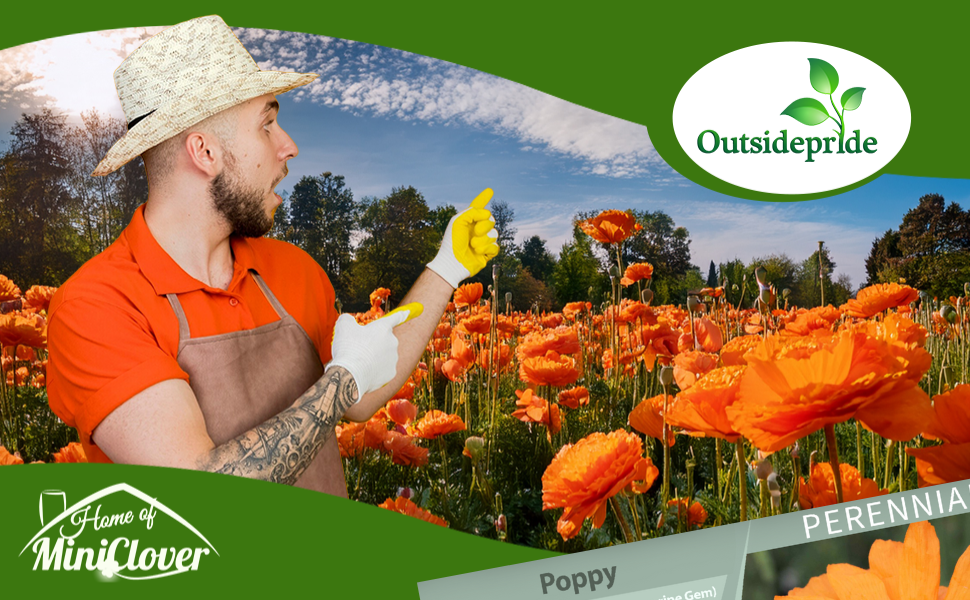

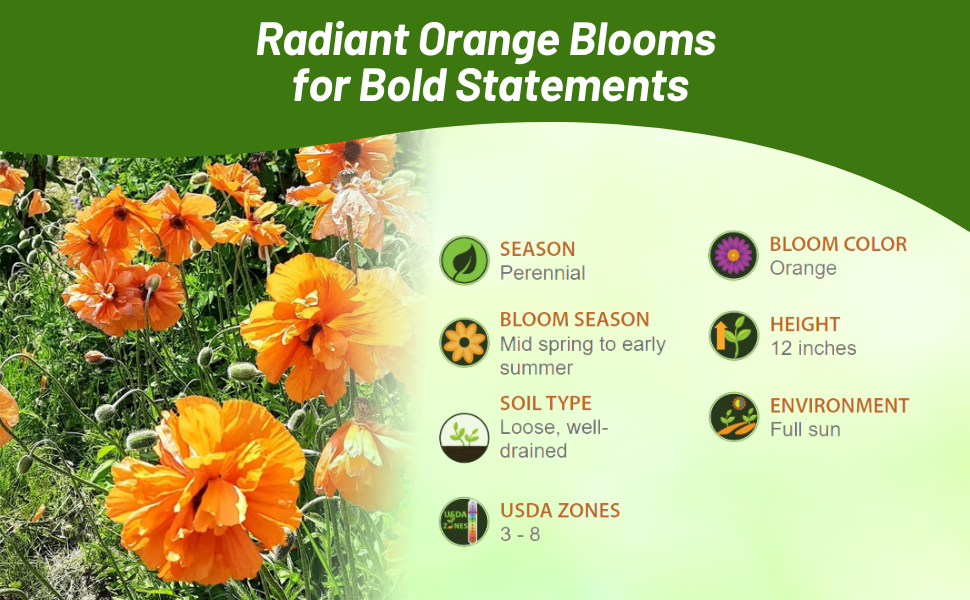
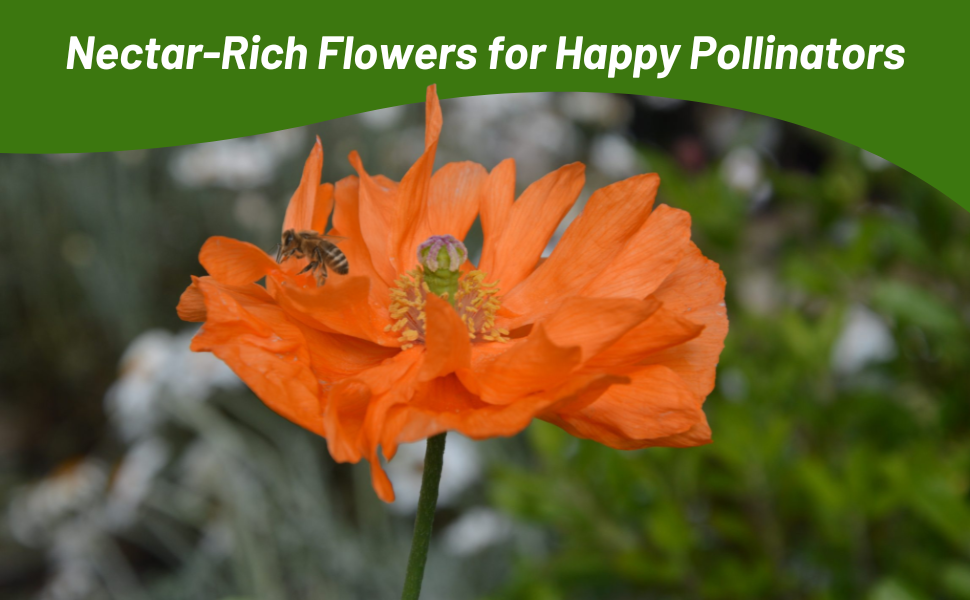
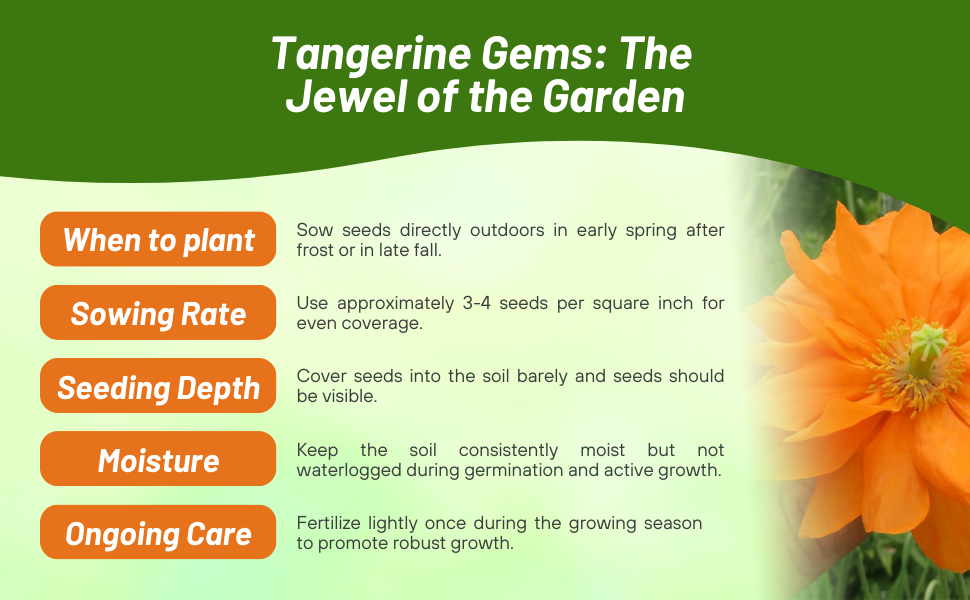
Poppy (Papaver rupifragum Double Tangerine Gem) - This perennial flower is a native of Morocco and brings saturated tangerine tones to the most rocky and arid landscapes. Fully double orange blooms of overlapping rings of paper-thin silky petals with Ferny, silver-blue foliage only growing 12 inches tall. Sunlight makes the translucent petals of Papaver Double Tangerine positively glow with color. The fascinating attractive seedpods will add a nice touch to dried arrangements. This cute little robust plant looks best in a rock garden or edging a hot, sunny border.
This pollinator-attracting blooms in the first year and reseeds readily. In 1890, Sir William Jackson Hooker described finding P. rupifragum growing in dry, rocky places of southern Morocco at an elevation of 6,000 - 7,000 feet. Indeed, this drought-tolerant plant is perfect for meadows, xeriscaping, rocky gardens, and sunny, dry locations!
















